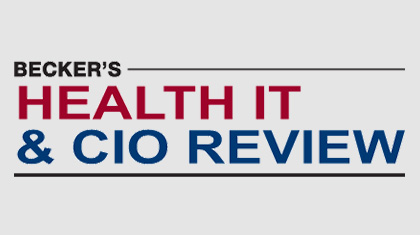While many physicians report frustration with EHRs, Michael Pfeffer, MD, took an interest in the technology — a decision that led him down a new career path. After earning his medical
patient-doctor relationship
Engaging patients through open notes: an evaluation using mixed methods
As the use of fully transparent medical records spreads, it is important to gain a deeper understanding of possible benefits or harms, and to characterise target populations that may require varying modes of delivery. Patient desires for expansion of this practice extend to specialty care and settings beyond the physician’s office. Patients are also interested in becoming involved actively in the generation of their medical records. The OpenNotes movement may increase patient activation and engagement in important ways.
This is an Open Access article distributed in accordance with the Creative Commons Attribution Non Commercial (CC BY-NC 4.0) license, which permits others to distribute, remix, adapt, build upon this work non-commercially, and license their derivative works on different terms, provided the original work is properly cited and the use is non-commercial.
US experience with doctors and patients sharing clinical notes
The move to offer patients online access to their clinicians’ notes is accelerating and holds promise of supporting more truly collaborative relationships between patients and clinicians, say Jan Walker, Michael Meltsner, and Tom Delbanco
For decades clinicians have experimented with making medical records available to patients.1 2 3 4 5 6 Now electronic medical records and associated secure internet portals provide patients the opportunity to view test results, medications, and other selected parts of the medical record on line.7 But few patients are offered full access to their records; clinicians’ notes are rarely visible. After a demonstration project showed the acceptability of OpenNotes (www.myopennotes.org) in the US,8 several prominent healthcare providers decided to make clinicians’ notes available to patients online before further formal evaluation. We describe the OpenNotes movement in the US and how sharing notes with patients is spreading. We also underline the case for research to assess the long term effect of sharing notes and the potential to foster improved and truly collaborative care.
The essence of morning
Hot coffee beckons with its promise of contraband comfort on a cold and busy Monday morning. Ms. H, my first patient, has not arrived yet. I consider a quick dash downstairs to the coffee shop. I can usually make it back in 4 minutes.… I glance at my email. You have 2 new PatientSite messages. I stay.
I close the many open windows on my computer and open the link. I approach the blinking vigil of the messages as I might a covered wound—with a mix of curiosity, a desire to help, and a sense of impending doom. I feel two competing desires: to leave the bandage on or lift it off as quickly as possible. A subconscious triage occurs—do I have enough time, attention, and emotional energy to respond in this moment?
The first email is from Diana and it dispels the fog of distracted multitasking. I hear her voice as I read: “Doctora, ¿Como esta? Y la familia…?” She continues, in Spanish: “Thanks for seeing me on Friday. I read your office note. The fever is gone and I am feeling better. Can you schedule the PET scan sooner? Also, when you have a momentico, can you give me a call? I want to ask you about some of the blood tests. Affectionately, Diana.”
The urban underserved: attitudes towards gaining full access to electronic medical records
As the use of electronic medical records (EMRs) spreads, health-care organizations are increasingly offering patients online access to their medical records. Studies evaluating patient attitudes towards viewing elements of their records through secure, electronic patient portals have generally not included medically underserved patients or those with HIV/AIDS. The goal of this study was to gain insight into such patients’ attitudes towards online access to their medical records, including their doctors’ visit notes.




